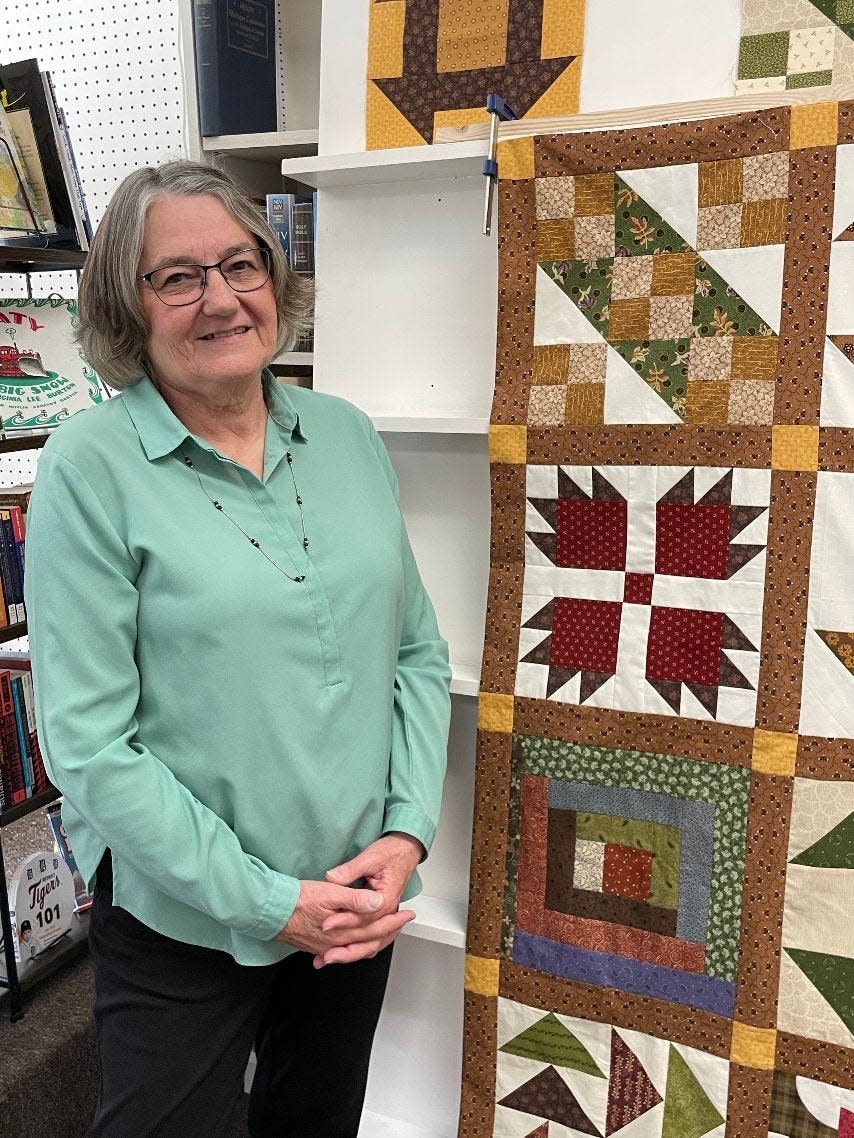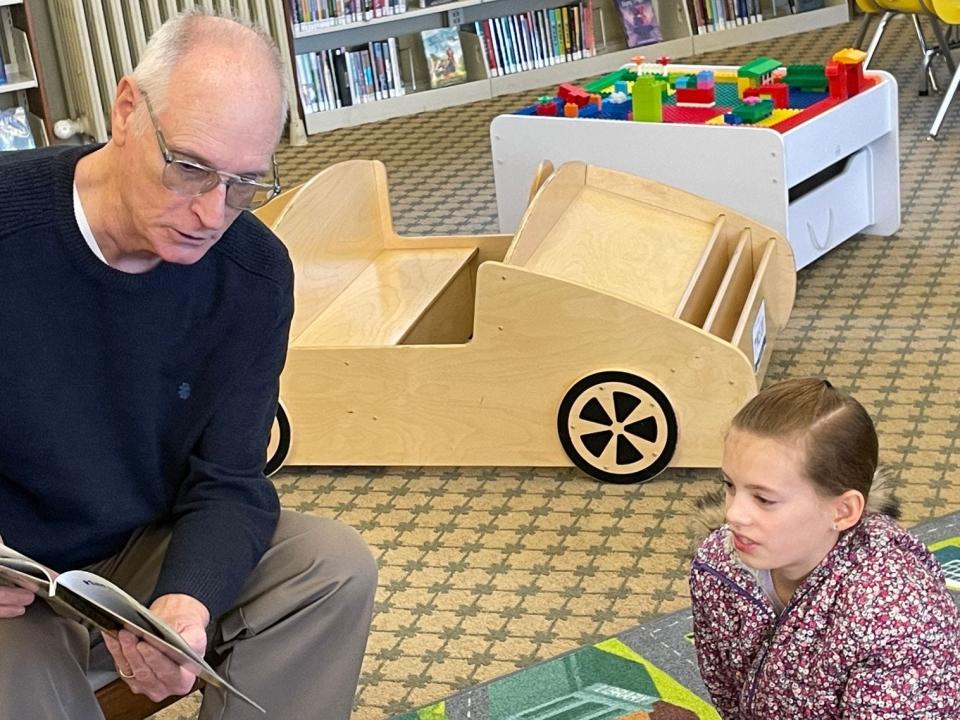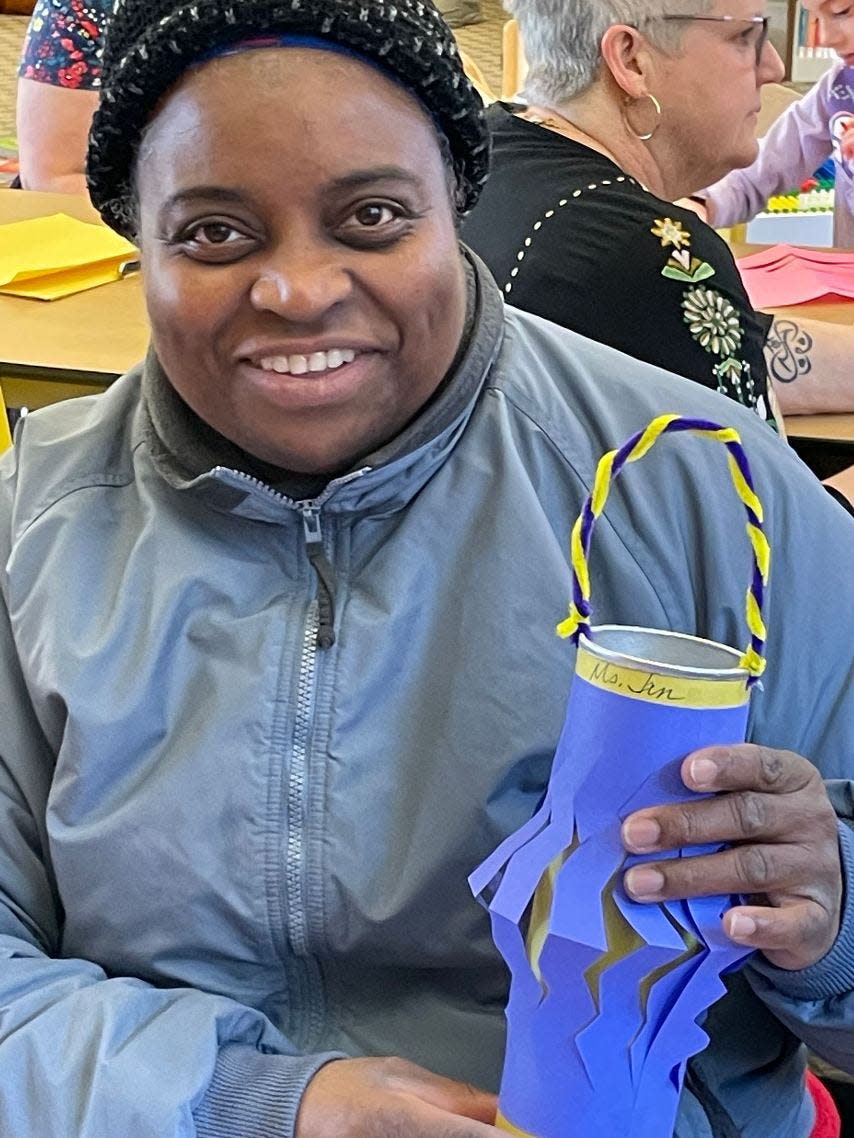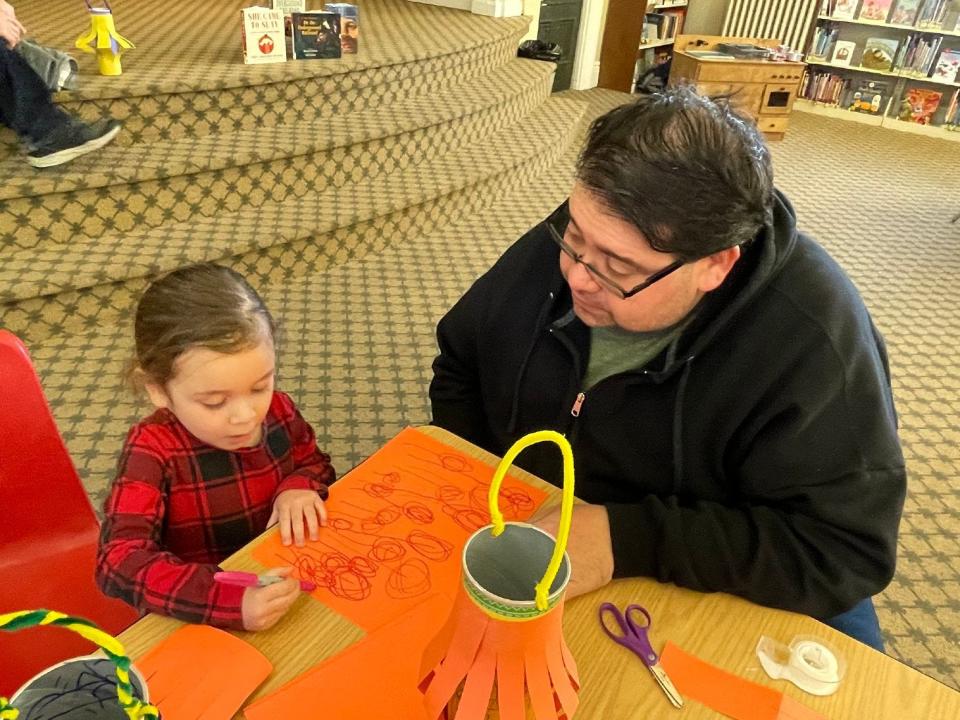Dorsch branch library, Book Nook host Underground Railroad programs

Lindsay Young just finished reading a book on Harriet Tubman.
So, on Saturday, the 10-year-old from Newport and her mom came to downtown Monroe for the “Discover the Underground Railroad” series.
Earlier report:10 events left in 'Discover the Underground Railroad' series
“I was reading a book about Harriet Tubman,” said Lindsay, a student at St. Charles School and the daughter of Micah and Lynda Young.
Lindsay and Lynda were among the attendees at the “Lighting the Way to Liberty” program, offered at the Dorsch Memorial Branch of the Monroe County Library System. Several of the “Discover the Underground Railroad” series’ 11 offerings took place Saturday. Another was held at the nearby Book Nook. The local series continues through March 6.

The Dorsch Memorial Branch is widely believed to have been a stop on the Underground Railroad, a network of people who worked together to help runaway, enslaved people find freedom in northern states and Canada from 1850-60.
For an hour Saturday, Dorsch attendees could visit three activity stations inspired by the Underground Railroad.
At one stop, William McCloskey, retired Monroe County Community College professor, read the children’s book “Harriet Tubman.”
At another, Karen Sweat, youth service technician at Dorsch, helped attendees make a paper liberty lantern, based on the metal one used by Underground Railroad conductor Tubman.

Using empty Pringles cans and construction paper, the attendees, most of whom were children, customized their lanterns.
Lindsay made a red lantern. Jennifer Wilson of Monroe, formerly of Detroit, enjoys creative projects and came to Dorsch to make a blue lantern. Others taking part in the activity included the children of Monroe’s Cristoval and Amanda Mendoza: Nathaniel, 10, Caleb, 6, and Ella, 3.
At Dorsch’s third station, attendees watched a video on the history of the Dorsch Memorial Branch Library, the former home of German-native Dr. Eduard Dorsch. Dorsch was a known abolitionist who is said to have taken in enslaved people en route to freedom. His home was built in the 1850s.
Barbra Krueger, community outreach coordinator at the Monroe County Library System, told attendees at the video station about a space in Dorsch’s basement that is believed to be the entrance to an underground tunnel that connected the library to the adjacent First Presbyterian Church.

But, because helping enslaved people escape their bondage was illegal in the mid-1850s, there is little written documentation about any of the Underground Railroad stops.
“They didn’t record something that was illegal. There is not a lot of written documentation, not for any of the stops,” Krueger said.
Four members of First Presbyterian were at the program. They said they’ve been told the tunnel ran along the north side of the building. In 2020, the church members looked into the church’s history for the congregation’s 200th anniversary. The members said no one could find written records on the Underground Railroad.
At one time, Dorsch allowed visitors to view the tunnel entrance in the basement.
“We used to tour small groups and show the entrance to the tunnel. The basement is not in a condition to be viewed in person,” Krueger said.
She said a cistern and the well in front of the building also were part of the Underground Railroad. A cistern is a receptacle for catching rainwater.
“The cistern has a trap door that opened, and (enslaved people) hid in there and they covered up the top,” she said.
The brief video also covered other topics related to the Dorsch building, including the Little Brown Bear statue in the front of the library that commemorates the children’s books written by Monroe author Elizabeth (Aunt Bett) Upham McWebb. The video also touched on the Ginkgo tree, which was given to Dr. Dorsch by the ambassador to China. It was presented at the inauguration of Abraham Lincoln.
“It’s a living fossil. It can live for thousands of years. One survived the bombing of Hiroshima,” Sweat said.
Near the Dorsch Memorial Branch Library, Janet Berns, owner of the now-closed Book Nook, reopened her store for the day for the “Discover the Underground Railroad” series.
Berns hosted Regina Feldpausch of Petersburg, who offered the program “Point the Way: Codes of the Freedom Quilt.”
Feldpausch spoke to attendees about quilts made by enslaved people. Some believe the quilt block patterns created by enslaved people contained clues to help others escape their bondage. On Saturday, Feldpausch showed examples of some of the "message" blocks on a quilt that she made.
Feldpausch has been an avid quilter for 45 years. About 20 years ago, she became interested in the quilts of the mid-1800s.
“I’m fascinated with this time period and with the fabric of the period,” Feldpausch said.
To learn more, she visited several plantations, from Florida to Maine. She did most of her research at the MCLS. Among her favorite reference books is “Stitched from the Soul” by Gladys-Marie Fry.
“We have a great library system,” she said.
Like the Underground Railroad itself, not much was recorded about messages hidden in quilts. Some say quilts with messages were displayed on flagpoles and clotheslines to lead enslaved people to freedom. Others say that’s just folklore.
Either way, Feldpausch says these blocks offer a glimpse of the enslaved people’s journey to freedom.
“Most heard (of the Underground Railroad) by word-of-mouth and stories. Quilts represented the road to freedom and what the (enslaved people) had to do,” Feldpausch said.
The log cabin quilt block, for example, may have given enslaved people directions to the next safe hours. A black square marked a safe location. A block that resembles puzzle pieces told the enslaved people to vary in their travel paths. A bowtie quilt pattern showed the importance of disguise.
“It was important to not look like an (enslaved person). Look liked a freed Black instead, dress differently,” Feldpausch explained. “Harriet Tubman wore a disguise.”
One of Feldpausch’s favorite period blocks is the bear paw, which looks like animal tracks.
“Go to mountains, forge a path, like the animals,” she said.
Feldpausch also talked about utilitarian quilts made by enslaved people, both for the plantation owners and for their own use.
“I’m amazed at the quality of quilts they made. The traditions they brought from Africa carried through to the quilts that they did,” she said.
Feldpausch learned the enslaved people held quilting parties.
“Men and women both quilted. The men would tie and thread needles,” Feldpausch said.
A history major, Feldpausch had been a teacher for Summerfield Schools and in other states. Her last classroom before retiring 20 years ago was inside Ford’s former Monroe Stamping Plant.
She and her husband, Larry, have three children and six grandchildren.
This article originally appeared on The Monroe News: Dorsch library, Book Nook host Underground Railroad programs

